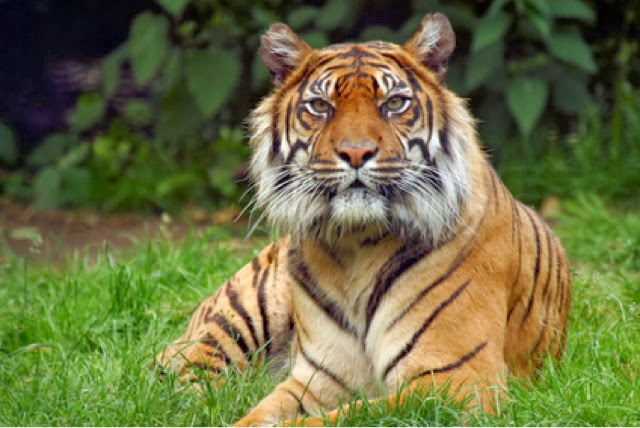In a pride female and male lions play different roles. The females will generally hunt for food together and will raise the cubs together. The males will defend the pride from outside lions, mate with the females, and are the first to eat or drink in the pride. There is usually one or two alpha males and many females. Males have to fight and win against the alpha male in the pride to be able to take over. Females will stay with the pride for life, unless food get scarce and they have to move.
Cubs are born around the same time, and are cared by the females of the pride. Some females will nurture their young, but if food is scarce some will abandon their young. Cubs will feed from all females, which gives the neglected cubs a chance at survival. The cubs will eat last after the females in the pride. Mother lions will have 2 to 3 cubs. The female cubs will stay with the pride and the male cubs will be driven off at 2 years. A lion's life span is 10 to 14 years.
Lions live in Africa, south of the Sahara desert. There are also a small amount of lions in Asia. Traditionally lions had 12 subspecies, some have been determined as invalid, now only 8 are usually accepted. They are the Asiatic, Barbary, West African, Northeast Congo, East African, Katanga, Transvaal, and Cape lion. The Barbary and Cape lion are extinct. There is a white lion, they are not albino they just carry a recessive pigment gene. Lions are considered vulernable, and not endangered, though they have lost many of their numbers to poachers.
Female lions hunt together for their pride. They use teamwork to bring down their prey. Because of that teamwork they can bring down large animals. Lions will eat wildebeest, zebra, hippos, young elephants, giraffes. They will also eat smaller animals such as warthogs, antelopes, and crocodiles. Lions are also scavengers as well as hunters. They will eat meals taken away from animals like hyenas and cheetahs. These meals make up 50% of their diet.
The mane of a male lion is unique among the big cats. The darker the mane is the healthier the lion is. Male lions do not usually hunt because of their mane. When male lions run their mane will over heat them. Also the mane does not help camoflage the lion, which does not help if they are trying to sneak up on prey. A lion's mane will help him seem bigger and more powerful to others.
Credits:
"Lion Pictures, Information and Facts." Bigcat.com. N.p., n.d. Web. 31 Oct. 2013. <http://www.bigcat.com/lion.aspx>.
"Lion." Wikipedia. Wikimedia Foundation, 30 Oct. 2013. Web. 31 Oct. 2013. <http://en.wikipedia.org/wiki/Lion>.






















